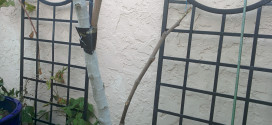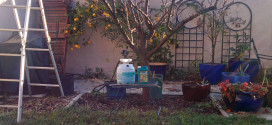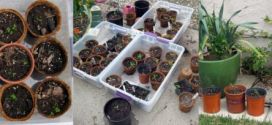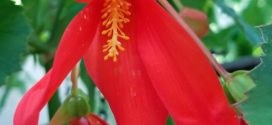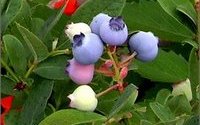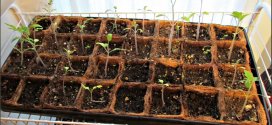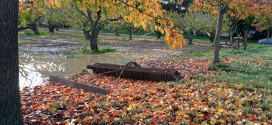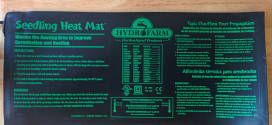When you don’t have much ground soil, use containers. A minimum container size is a gallon. The largest containers can grow a 10 foot tree. Smaller pots can easily be moved for better aethestics, better sunlight. Key issues for containers are water, drainage, and nutrients. 16×7 = 6 gallons 14×12 = 8 gallons
Read More »How To
Grafting
What Is Grafting? The seed from a Gala apple will produce an apple tree, but it will not produce a Gala apple tree. Likewise, the seed from a Honeygold apple will not produce a Honeygold apple tree. In other words, fruit trees cannot be reproduced “true” to the original cultivar from seed. They can only be reproduced by grafting. Grafting …
Read More »Dormant Spraying of Apricots
Apricots are suspectible to several diseases: Brown fungus rot, leaf curl, and bacterial canker. Brown rot is a fungus that appears as a water-soaked lesion on a fruit. This lesion spreads until the whole fruit shrivels up like a gray fuzzy mummy. If the fruit is not removed, the spores of the fungus will drop to the ground during the …
Read More »Growing from seed
In the dark, dark days of winter, you are visited by the sirens of seed catalogs. Instead of tropical beaches, you see lush produce. I used to use peat pots for the seedlings but now I use coconut coir pots. The Coir people make the case that peat is a relatively finite resource. Both peat and coir providers tell you …
Read More »Overwintering Your Tuberous Begonia
Tuberous Begonias, like our Santa Cruz Sunset, REQUIRES winter dormancy. This means you need to begin in fall by reducing the water to the plants until the tops have died back and the soil is completely dry. Here is my shortcut: Forget to bring in the basket on the night of the first freeze! See the results in the photo …
Read More »Acidify Your Soil for Blueberries
Reposting of article from HomeGuides.SFGate.com. They have additional articles on this topic. Blueberries are known for their love of acidic soils, preferring a pH level of 4.8 to 5.5. If you’re discouraged from growing blueberries because of chalky or alkaline soil, take heart. Your soil can be altered both before and after planting to create and maintain the low pH …
Read More »General Advice on Tomatoes
Tomatoes can easily be grown in Sunnyvale gardens. Most varieties are warm-season. But there are a few varieties that produce ripe fruit before June or after October.
Read More »Winter Garden Activities
Winter is short in Sunnyvale: Typically mid-December to mid-February. In historically normal years, it rains for two days and then is clear for 3 days. Most of Sunnyvale’s 12 annual inches fall between November and March. In January there might be one or two cold spells with temperatures below freezing.
Read More »Seedling Heat Mat
Use a seedling heating mat to improve the germination of your seeds. These pads are specially made for use with growing seeds, giving the correct temperature while avoiding the danger of using a home heating pad with damp soil and spilled water. Read the seed packet to find the correct timing for planting the seeds. Each variety of seeds will …
Read More »
